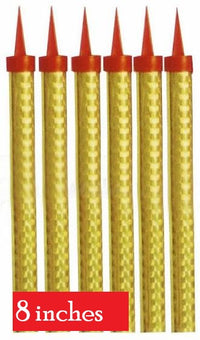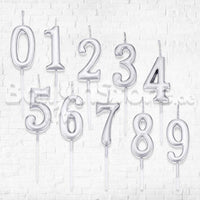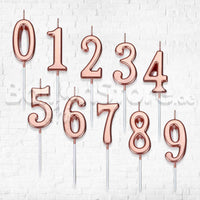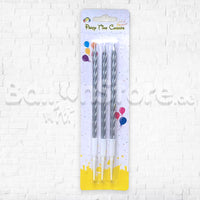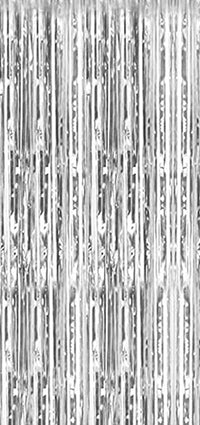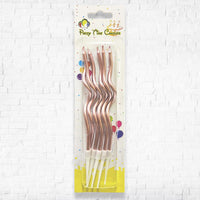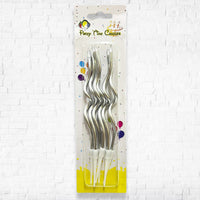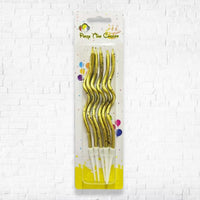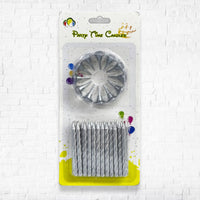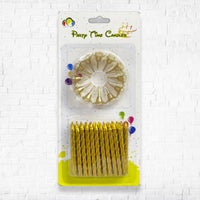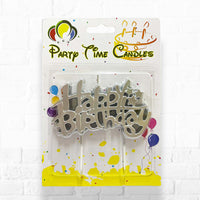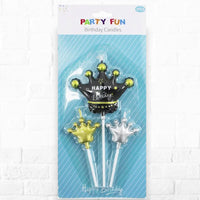If you need attractive and charming decorations then foil balloons are a popular decoration for parties and events. Their metallic sheen makes them eye-catching and they can retain helium for days to keep them floating.
But the problem arises when those foil balloons will start to sink and need deflation. Deflating foil balloons properly ensures they can be reused in the future.
Overview of General Deflating Process of Foil Balloons
You should start by untying the balloon's ribbon so it can lay flat. By using something sharp like a pin or needle, you can puncture the balloon near the tied end.
You should make the hole small so the helium escapes slowly rather than producing a loud pop. Then you must allow the balloon to deflate completely before making a second hole on the other side to let out any remaining gas.
You can store deflated foil balloons by placing tissue paper inside to help hold their shape and then with care the foil balloons can be reinflated and reused many times.
What is Deflate Foil Balloons Mean?

Deflating foil balloons refers to letting the air or helium out of metallic foil balloons to make them flat and collapse. Foil balloons are made out of metalized nylon or foil laminates which makes them hold their shape when inflated with air or helium.
You need to find the self-sealing valve where the balloon was inflated and gently press on it to release the air or helium to deflate it. The balloon will slowly start to lose its fullness and begin to wrinkle and collapse.
You must keep pressing the valve until all the air/helium is released and the foil balloon becomes completely flat and deflated. Deflating foil balloons after use is important so they don't fly away or pose a threat to wildlife or the environment if released.
Why You Should Deflate Foil Balloons

Foil balloons are fun for parties and celebrations. However, they can be dangerous if not properly deflated after use. Deflating foil balloons is important for several reasons.
-
They can pose an electrical hazard if they come into contact with power lines since the metal foil conducts electricity and can cause fires or electrocution.
-
Foil balloons can be harmful to wildlife if they end up in nature. Animals and birds can mistake them for food and choke.
-
Deflating balloons helps keep neighborhoods clean and prevent garbage accumulation since the scraps of foil from popped balloons are not biodegradable.
We can keep our communities tidy by deflating and disposing of them properly. This will take a few minutes to deflate foil balloons making them safer for people, animals, and the environment. This will be a small act from your side but that will make a big difference.
How to Deflate Foil Balloons Without Straw

The process of deflating foil balloons and letting air out can be tricky without a straw but here is an easy way to perform this;
-
You must start by gathering any sharp object like a thumbtack, pin, needle, or knife, and be very careful when handling sharp objects.
-
Then gently pierce the balloon near the tied end but remain cautious not to pop it while making a small hole.
-
You must press gently on the balloon to force the air out through the hole and continue pressing lightly all around the balloon to push out all the air.
-
You must make sure to keep a finger over the hole so it doesn't re-inflate and once fully deflated, remove your finger and the balloon should stay flat.
- Then discard the deflated balloon appropriately. With some care and patience, foil balloons can be deflated safely without a straw.
How to Deflate Foil Balloons by Avoiding the Popping
Foil balloons can become challenging to deflate without popping with the key lying in going slowly and gently.
-
You should start by untying the balloon's ribbon so the opening is accessible and must not squeeze or put pressure on the balloon since this can cause it to burst.
-
You should gently pinch the balloon's neck above the opening and let out air slowly. You want to maintain control so air doesn't rush out all at once.
-
Then you should continue letting out small amounts of air while gently squeezing the neck and rolling up the opening as you go to help control the airflow.
-
You must take your time and with a slow and steady approach, you can deflate foil balloons in a controlled way without any pops or bursts.
- The way of going slowly is the real game when it comes to safely deflating foil balloons.
Step-by-Step Guide (Best Way to Deflate Balloons)

While being a festive and fun way of making an event memorable, this also becomes necessary to find the best way to deflate the foiled balloons to make them reusable and also fulfill the safety measures.
Here is the step-by-step guide on the best way to deflate foil balloons;
-
You should start by untying the knot at the end of the balloon but be gentle as you untie it to avoid popping the balloon.
-
Pinch the neck of the balloon closed so no air escapes once the balloon is untied.
-
Then take a push pin and carefully pierce the foil near the neck of the balloon thus making the hole small.
-
You must allow the air to slowly seep out of the hole and do not squeeze or pop the balloon.
-
You should continue holding the neck closed as the balloon deflates.
-
Then let go of the neck when the balloon becomes fully deflated and it should lie flat.
-
You should make another small hole to release any remaining air if needed.
-
You must not let go of the deflated balloon or it may re-inflate from the remaining air inside.
-
The foil balloon can be folded up and recycled or disposed of once deflation is completed.
- You must make sure to keep pins, children, and pets away from balloons during this process.
Conclusion
Deflating foil balloons properly ensures they can be reused or disposed of safely. You can give your foil balloons new life or discard them without harming the environment by following these simple steps untying the balloon, gently squeezing the air out, folding, and storing. Foil balloons do not have to be single-use items if a bit of care and effort is done from your side.



